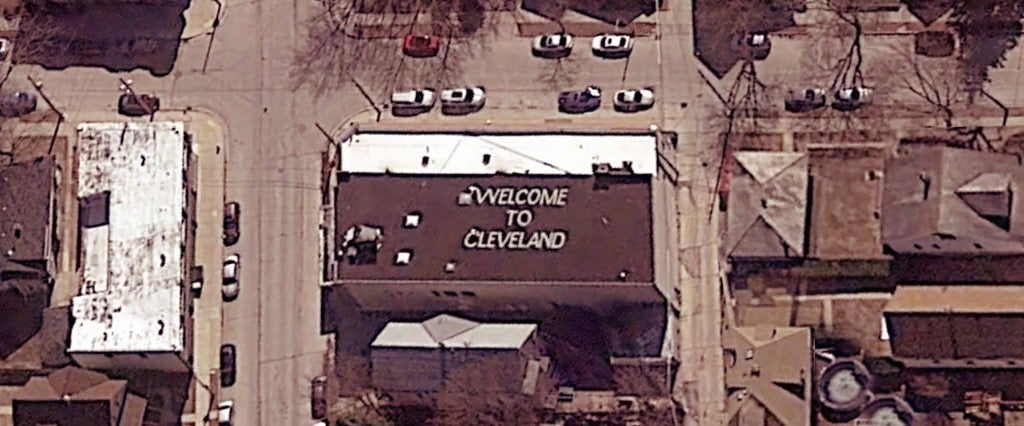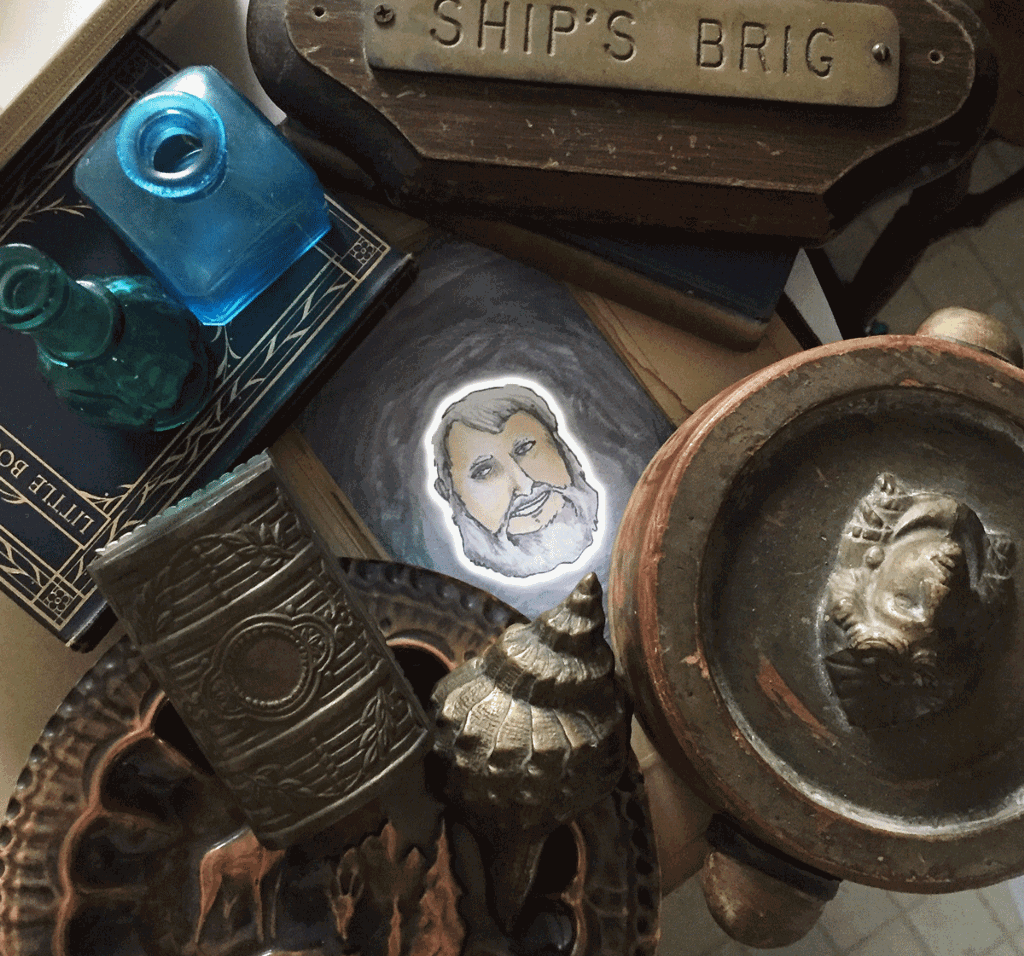From an airplane window, the curve of the western edge of Lake Michigan is gentle, almost scrotal, and the opposite shore so distant a horizon that the inland sea makes a coastline of Wisconsin.
The approach to General “Billy” Mitchell Airport, named for the famously belligerent father of the modern Air Force who was heir to old Milwaukee money, arcs east over the water and circles back south of downtown over the scruffy neighborhood of Bay View.
Some days, on some routes, it can be a low approach, with the quirky cafes and vintage clothing shops along “KK” — South Kinnickinnic Avenue — easily spotted from the air. That blue water. Those tidy little boxes of working-class houses. The long ribbon of highway making its way down to the city of meatpackers and hog butchers. And there, not even three miles north of the nest of runways that is the airport, in white block letters on a large, flat roof, is an alarming message to any pilot or passenger about to land in Milwaukee: “WELCOME TO CLEVELAND.”

The letters, precisely as wide as a paint roller and refreshed every few years, were applied directly onto parallel strips of rolled black roofing material in 1978. It was that sort of year. Hair was big, feathered and permed — and that was just the men. Space Invaders was the new arcade game. Starsky was still with Hutch. The Stones released “Some Girls,” and Bianca divorced Mick, probably not for that reason. In 1978, people were given to occasional whimsy. Acts of social subversion. A little harmless cultural commentary. A tenor of cultural zeitgeist that was particularly well-suited for Mark Gubin, the man responsible for lightly trolling air passengers arriving in Milwaukee by duping them into thinking they were actually landing in Cleveland.
“I don’t think it’s ever truly confused or hurt anybody,” Gubin says. “I don’t want that. It’s just meant to be fun — though not everyone has a sense of humor.”
Gubin, a magazine photographer based in Milwaukee, had recently purchased an old movie theater in Bay View. In 1978, he was dining al fresco on its rooftop with his secretary. The planes approaching Mitchell Airport hung low in the air over the theater, roaring like the end of the world. Gubin and his secretary remarked that if they could see into the windows of the plane (which they could), the passengers and pilots could see the rooftop, too; she suggested Gubin paint a welcome message in big letters.
There are rumors that pilots would sometimes draw the cabin’s attention to the sign, and stories that now and then, some passenger gazing earthward actually thought Cleveland loomed large. But no one has ever knocked on Gubin’s door asking for directions to the Rock and Roll Hall of Fame. “I don’t think it’s ever truly confused or hurt anybody,” Gubin says. “I don’t want that. It’s just meant to be fun — though not everyone has a sense of humor.”
In 1979, then-president of the Common Council of the City of Milwaukee, Ben E. Johnson, wrote a tongue-in-cheek letter to Milwaukee Sentinel columnist Alex Thien about the sign causing “furor on the part of some Milwaukee citizens and outrage and panic on the part of some air passengers.” Johnson joked that the council was considering prohibiting the sign because it was “misleading … [but] the sign is not at all misleading. I was in Cleveland not too long ago and I agree with Mr. Gubin that anybody who wants Cleveland is welcome to it.”
Over the years, a lot of people have written or talked about Gubin’s rooftop. A Cleveland DJ once ambushed Gubin with a phone interview in the wee hours one morning. It was a story for a while in England (The Daily Mail and The Independent). It’s been the butt of one-liners on Today and the Tonight Show. And last summer, it went viral.
But while the rooftop is widely known, not many people have looked underneath it. Nor have many bothered to get to know the light-hearted collector and artist who uses it as the roof over his head.
Down on the street, the old movie house marquee bears no letters or message but still clings to the front of the yellow brick building. The kind of peel-off letters hardware stores sell spell out “MARK GUBIN” in loud uppercase on the crimson door. Blue-and-orange arrows point to a vertical mail slot that must have confounded a letter carrier or two, because it’s now labeled “MAIL” with a metal sign. A rustic orange rectangle is painted around a badly installed doorbell that hangs at a rakish angle. Another helpful arrow points out “DOOR” and a third reads “BELL.”
Gubin comes to the DOOR and cuts a dapper figure in a tweed vest, orange plaid shirt, white beard and full head of hair. He looks younger than his 73 years and has a ready laugh.
He leads me up a flight of stairs lined with ship’s lanterns, some of them gigantic, to the old movie theater balcony. Today, the seats are gone and the upper level of the building tucked just under that famous roof has been transformed into Gubin’s living space. He settles into a long, overstuffed leather sofa; end tables hold stained glass lamps that cast golden circles of light. It’s midday, but movie theaters have no windows.
If it’s possible to know a man by the things he owns and the ways he displays them, then this is Mark Gubin: a man who loves history, both the world’s and his own; a man who feels his ancestors’ livelihoods in his own DNA; a man who lives simultaneously in this age and the ages that have come before.

He collects, well, everything: Oriental runners snake paths around and through antiquities — primitive wooden statues and things that once were useful aboard sailing vessels. On the walls, daggers, swords and hatchets are arranged in half-circles around helmets — Spanish, European, German, pith, pointed — from the last century and the one before that and the one before that. Military medals are pinned in clusters beneath gilt-framed portraits of Gubin ancestors. Antlers spring out from the plaster, model planes dangle down from the ceiling. Framed pages from shipping records and newspapers with the names of long-dead members of the family tree. An enormous ship wheel, nautical spyglasses of brass and glass, tools from the sea: awls, hand-crank drills, three-headed, nasty-looking hooks a grown man could hang from. A model ship in a giant glass cage. Whaling harpoons, tall enough to hit the ceiling, one carved “100 Sperm at six months out Oct 3 1841.”
Gubin made his living as an adventurer of non-nautical nature: he was a travel and outdoor freelance photographer for some of the best magazines in the world.
Gubin’s family left England to escape its Civil War and settled in Savannah, Georgia, in 1638. They were in shipping, generation after generation, and though some moved to Milwaukee, they never really felt comfortable so far above the Mason-Dixon line (or on land). Two hundred years later, one of them was a Confederate raider in the Civil War on this side of the Atlantic.
Gubin never went to sea in quite the manner of his forebears, but he does keep a 56-foot tugboat, the Solomon Juneau, anchored at the downtown Milwaukee dock. The Juneau has a steel hull so it can ride out the Wisconsin winters in Lake Michigan — and contains a fireplace and a sauna. For about a decade, he owned an admiral’s barge built for the British navy, the Maid of Honour. Driving near Sturgeon Bay in northern Wisconsin, he spotted the barge being moved out of a building, and had to have it. History, legacy and tradition are sirens’ calls to him.
Gubin made his living as an adventurer of non-nautical nature: he was a travel and outdoor freelance photographer for some of the best magazines in the world. Over years of freelancing internationally, he shot airline ads, travel posters, landscapes and interiors, hanging around picturesque sites waiting for the perfect weather, the perfect lighting, the perfect moment.
“Magazines used to have money,” he remembers. On assignment in Africa, he and his colleague used their per diem of $90 to buy dinner for an entire village. “Then the world changed. The world is more dangerous now. And back then, everyone didn’t walk around with a camera.”
Gubin walked around with his cameras through some of the most remote parts of the planet. “What I did was pretty dangerous — insects, animals, disease. I think about some guys who always know the way they’re going to drive home from work. I never wanted to know my way home from work. Sometimes, I wasn’t sure how I was going to get back.”
He is a master of black and white, and a row of his best work, framed and edging one long hallway, is a series of hauntingly poetic images. He is cheerfully puzzled by people who can’t envision the photograph waiting to be taken. “It’s right there! But they can’t see it.”
He once painted a copy of van Gogh’s “The Starry Night” just to see if he could. It’s not half-bad, and hangs over a barrel filled with whaling gaffes. He carved and painted some of the antique-looking statues guarding paths through his collections. His sister lives in Paris and wrote for prestigious publications, and his Southern grandmother’s accent was so thick it was difficult to decode, “but her letters were little masterpieces of language.”
Like “WELCOME TO CLEVELAND”?
Sometimes while on assignment in Europe or Africa or Asia, he’d return to his hotel room to find a box of messages from reporters and producers wanting to talk to him about the words on his roof back home. With all he’s accomplished in 73 years, among all of his interests, creations and work, the silly sign atop his home gets the most attention — a sign of the absurdity of life, a sign that too many people can’t take a joke, a sign that completely reflects exactly who Gubin is. All reasons why he has never thought of removing it. “Oh, there are life haters and life lovers,” he explains. “This is a hard world. You’ve gotta be able to laugh.”
Pamela Hill Nettleton is an assistant professor of journalism and media studies at Marquette University.
